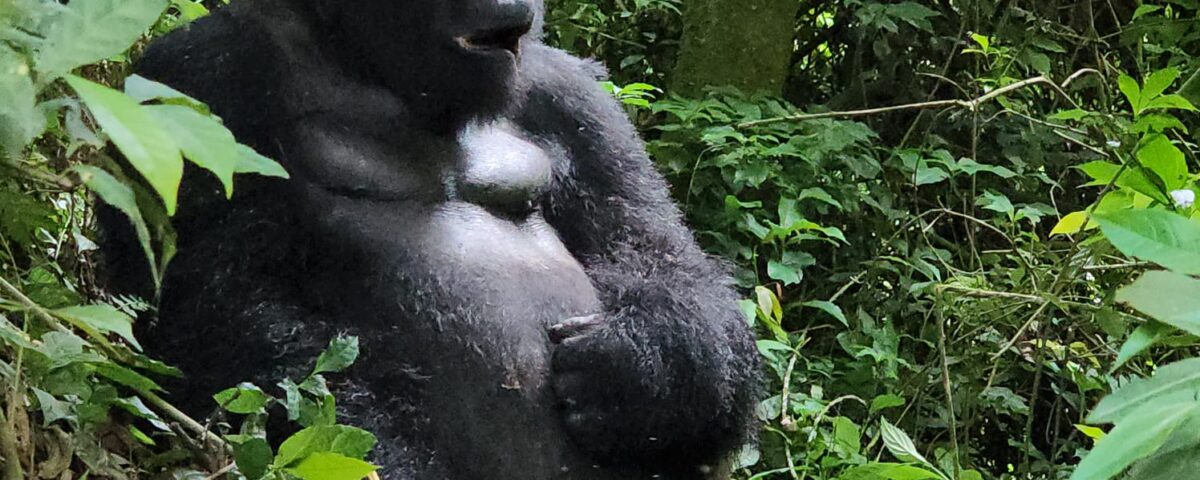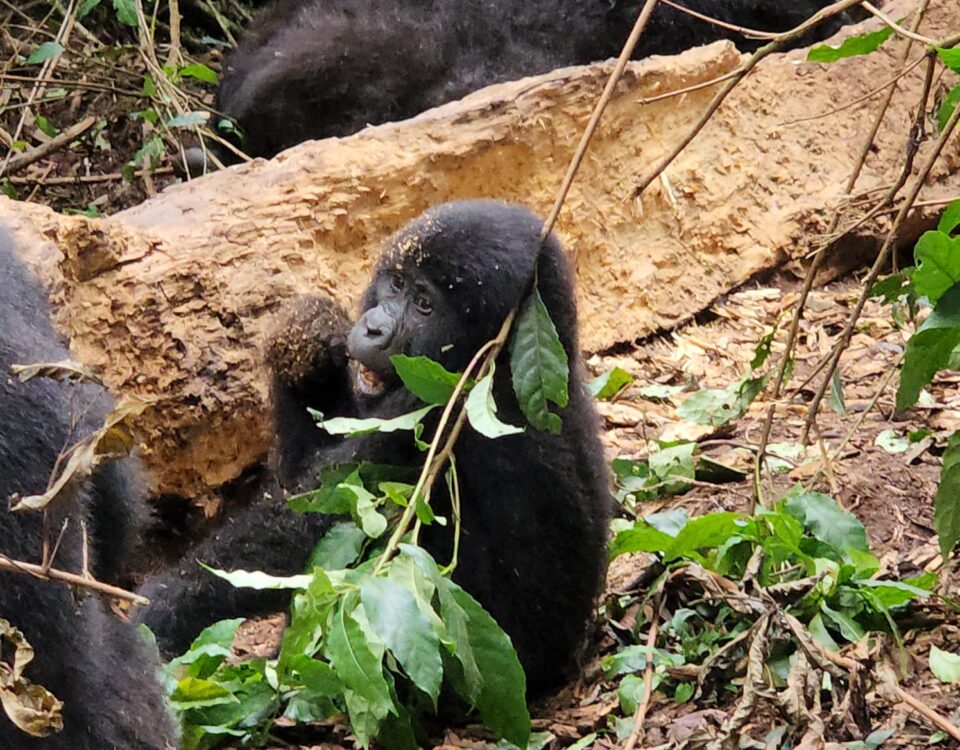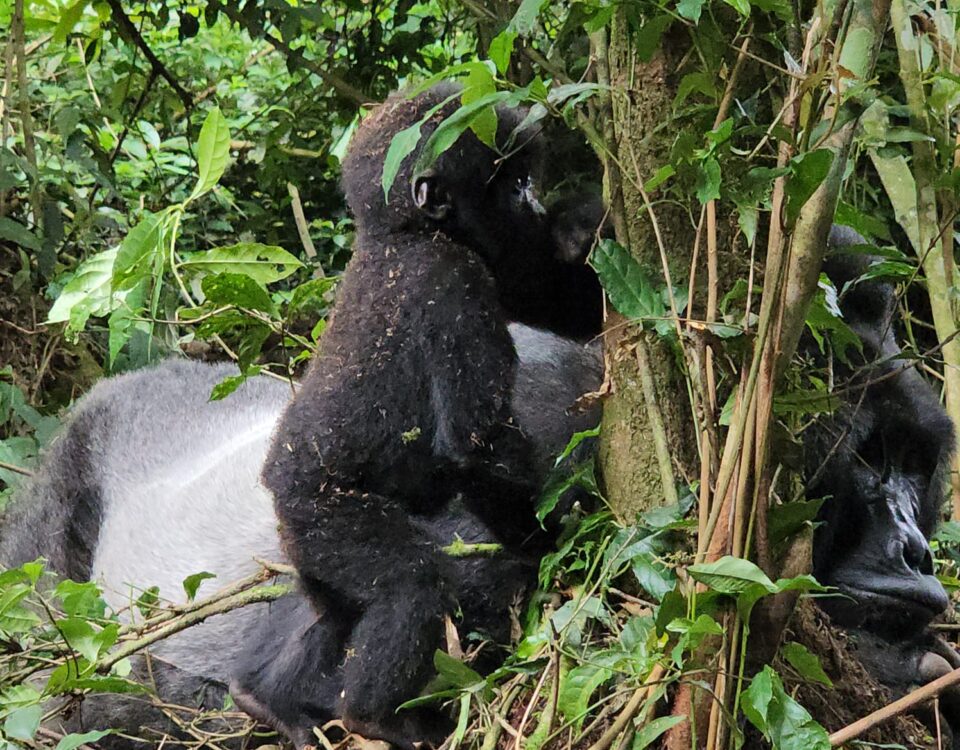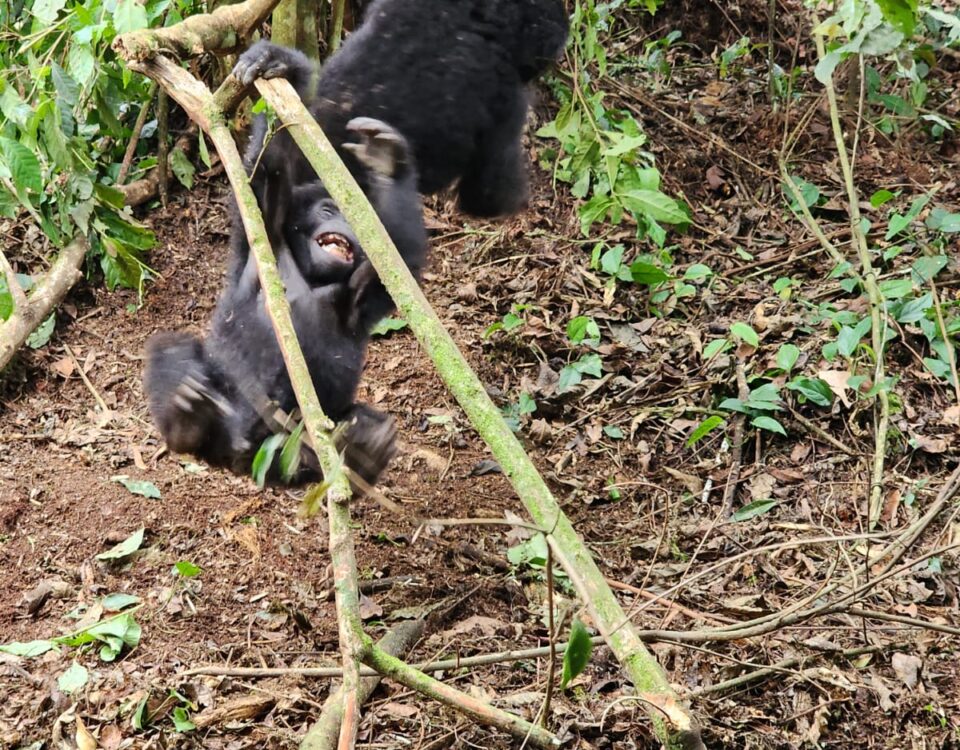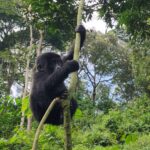
How Do I Book a Gorilla Trekking Permit?
March 26, 2025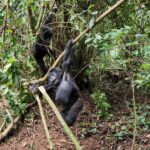
Can I Hike to the Top of Mount Karisimbi?
March 26, 2025Are There Other Wildlife Species in Volcanoes National Park?
Are There Other Wildlife Species in Volcanoes National Park? Volcanoes National Park is renowned for being the home of the critically endangered mountain gorillas. These magnificent creatures are undoubtedly the main attraction for visitors who come to Rwanda for a gorilla trekking adventure. However, Volcanoes National Park is not just about gorillas; it is also home to a rich and diverse range of wildlife species. The park’s varied landscapes, including bamboo forests, volcanic mountains, and lush valleys, create a perfect habitat for a wide range of animal species.
While the mountain gorillas steal the spotlight, there are many other fascinating wildlife species that call the park home. From golden monkeys to forest elephants, Volcanoes National Park is a sanctuary for numerous animals, birds, and plants. In this article, we will take you on a journey through the various wildlife species that inhabit this remarkable park, highlighting what makes them special and why a visit to the park offers much more than just gorilla trekking. Additionally, we will explore a cultural experience you can add to your visit, ensuring that your trip to Volcanoes National Park is both educational and enriching.
Golden Monkeys: A Rare and Playful Species
One of the most iconic species that can be found in Volcanoes National Park, besides the mountain gorillas, is the golden monkey. These playful and inquisitive creatures are endemic to the Albertine Rift, the region that Volcanoes National Park occupies, making them a rare sight. Golden monkeys are typically found in the bamboo forests of the park, where they move swiftly through the trees and often playfully interact with one another.
Unlike gorillas, which are largely terrestrial, golden monkeys spend most of their time in the treetops, where they forage for food, including fruits, leaves, and insects. The golden monkey population in Volcanoes National Park has been habituated for trekking, and tourists can enjoy a similar trekking experience to that of the mountain gorillas. A golden monkey trek allows visitors to witness these fascinating creatures up close as they go about their daily activities.
Golden monkeys are not only charming to watch, but they also offer a valuable opportunity to contribute to wildlife conservation efforts. Trekking to see golden monkeys helps raise awareness about their endangered status and supports the ongoing work to protect these remarkable animals and their habitat.
Forest Elephants: Elusive Giants of the Park
Volcanoes National Park is also home to a population of forest elephants, a smaller, more elusive relative of the African savannah elephant. Forest elephants are critically endangered, and their populations are much smaller and harder to spot compared to their savannah cousins. These elephants prefer the dense, tropical rainforests of Volcanoes National Park, where they can move through the thick vegetation undisturbed.
Due to their shy and reclusive nature, sightings of forest elephants are rare but highly rewarding for those lucky enough to encounter them. Forest elephants play a vital role in the ecosystem of Volcanoes National Park by helping to maintain forest structure. They are known for their habit of uprooting trees and clearing vegetation, which creates pathways for other animals and allows new plant species to grow. These elephants, like the mountain gorillas, are under threat due to habitat loss and poaching. Conservation efforts in the park focus on protecting both the gorillas and other wildlife, including these elusive elephants.
Though they are difficult to track due to their preference for deep, dense forests, spotting a forest elephant is a rewarding experience for wildlife enthusiasts and those seeking a more comprehensive wildlife encounter in the park.
Other Mammals of Volcanoes National Park
In addition to mountain gorillas, golden monkeys, and forest elephants, Volcanoes National Park is home to a variety of other mammals that contribute to the park’s rich biodiversity. One such species is the bushbuck, a medium-sized antelope that is often seen in the park’s lower altitudes. Bushbucks are well-adapted to the dense forest and are known for their elusive nature, typically moving quietly through the undergrowth.
Another mammal that roams the park is the duiker, a small antelope found in the lower forested regions. These animals are difficult to spot due to their stealthy nature, but they are an important part of the park’s ecosystem, providing food for predators like leopards. Speaking of leopards, these elusive big cats are also present in Volcanoes National Park, though sightings are rare. Leopards are solitary and nocturnal, preferring to stay hidden in the dense forest during the day.
Finally, the park is home to a variety of smaller mammals, including civet cats, genets, and several species of bats. These nocturnal creatures add to the diverse mammal population, which contributes to the overall health and balance of the park’s ecosystem.
Birdwatching: A Paradise for Bird Enthusiasts
Volcanoes National Park is a birdwatcher’s paradise, with over 200 species of birds recorded in the park. The park is part of the Albertine Rift, which is one of the most biodiverse regions in Africa. The diversity of bird species in Volcanoes National Park makes it an attractive destination for both casual birdwatchers and serious ornithologists.
Among the park’s notable bird species is the Rwenzori turaco, a vibrant and striking bird known for its bright green and blue plumage. The park is also home to several species of vultures, including the endangered white-headed vulture. Other birds found in the park include various species of sunbirds, hornbills, and African crowned eagles. Birdwatching enthusiasts will find plenty to enjoy in Volcanoes National Park, especially in the more open areas around the edges of the forest, where many birds can be observed in their natural habitat.
The presence of such a wide variety of bird species further enhances the park’s appeal, ensuring that visitors can enjoy not only the iconic gorilla trekking experience but also the joy of discovering Rwanda’s unique avian life.
A Cultural Experience in the Park: Batwa Community
While Volcanoes National Park is a haven for wildlife, it is also a cultural destination. A visit to the park can include a unique cultural experience with the Batwa people, an indigenous group that once lived in the forest before the establishment of the national park. The Batwa are known for their deep connection to the forest and their traditional knowledge of the land.
The Batwa Cultural Experience offers visitors a chance to learn about the Batwa’s way of life, including their traditional skills such as hunting with bows and arrows, gathering food from the forest, and building shelters from natural materials. Visitors can enjoy storytelling, dances, and songs that have been passed down through generations, providing a deeper understanding of Rwanda’s history and cultural heritage.
Adding a cultural tour to your gorilla trekking adventure enriches the experience, offering a more holistic view of the park’s significance, both ecologically and culturally. By supporting the Batwa community through tourism, you contribute to sustainable livelihoods for local people, ensuring that their culture is preserved for future generations.
Conclusion: A Diverse and Rich Ecosystem
Volcanoes National Park is much more than just a destination for gorilla trekking. With its diverse range of wildlife species, including golden monkeys, forest elephants, and a wealth of bird species, the park offers a complete wildlife experience. In addition to the remarkable animals, the opportunity to engage with the Batwa community provides visitors with a deeper connection to the park’s cultural heritage.
Whether you are trekking through the forest in search of mountain gorillas, spotting elusive forest elephants, or enjoying the rich birdlife, Volcanoes National Park is a sanctuary of biodiversity. As you plan your visit, consider adding these additional wildlife and cultural experiences to your itinerary for a truly enriching adventure. With its rare and diverse species, the park offers something for everyone, making it a must-visit destination for nature lovers and wildlife enthusiasts alike.

